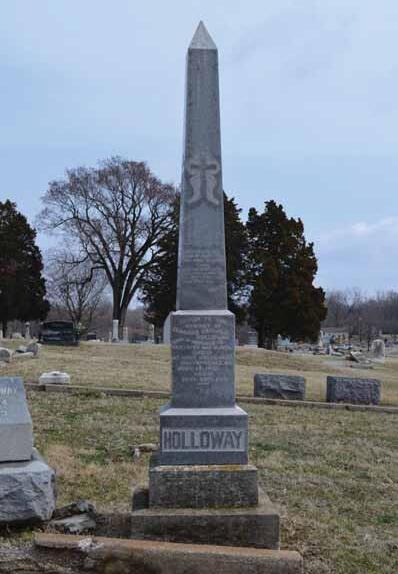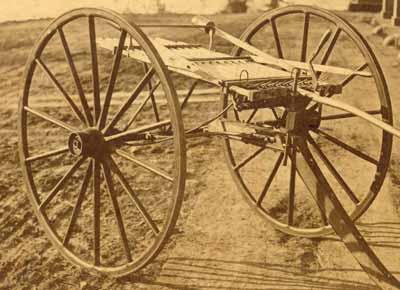
3 minute read
LOOKING BACK AT THE CIVIL WAR
forces and does not require a minimum number of combatants. Since the history of the American Civil battle of that war occurred at Manassas, Virginia on July 21, 1861. However, recent information shows
Civil War occurred on June 13, 1861, right here in Independence, Missouri, just west of where the Independence to Westport Road crosses Rock Creek. It was not fought by thousands of men, nor did it have well-known men participating. The battle consisted of just one hundred or so men on each side.
Advertisement
After the raid on the Liberty Arsenal, the raid on Chouteau’s warehouse, the Camp Jackson Affair and the Price-Lyon-Jackson meeting in St. Louis; Governor Claiborne Jackson of Missouri issued a proclamation on June 12, 1861 calling into active service 50,000 members of the state militia known as the Missouri State Guard (MSG). It was with this call out of the MSG, that set the events in motion for the Battle of Rock Creek.
Two units of the MSG were formed in Independence. The Independence Greys, led by Captain Thomas Arnold, and the Independence Blues, led by Captain George Whitehead. Ironically though, both units dressed in blue. This entire group was under the command of Colonel Edmund graduate who had served in the Mexican-American War, and fought against Native Americans in the West. Following Governor Jackson’s orders, the units gathered and set up camp in the pasture of resident Albert Oldham west of Independence near the Rock Creek crossing of the Independence to Westport Road.

In the pursuit of accuracy, it must be said that not all of the members of the units were present. Stories will say that a Mr. Patsy O’Donnell, a local shoemaker, showed up late and gloriously drunk. He was immediately arrested for showing up in such a condition. Patsy wouldn’t let that go and was reported to have said, “Ye-s havn’t got a man in yer company that can irrest me, sir.” Not long after those words left his mouth, Captain Arnold turned to Dealy Noland and ordered “Knock him down, Dealy.”
When Patsy woke up, he found himself hog-tied and trying to sober up.
On June 12, 1861 Union troops from Fort Leavenworth, under the command of Captain William Prince, came to Kansas City at the request of the loyal Union citizens of that town. To allay the fears of the citizens of Jackson County, Prince issued a newspaper article saying he came on the authority of the President of the United States to organize, “a Home Reserve Corps for maintaining the integrity of the laws and the rights of individuals.” He also said as soon as his mission was complete, he would return to Leavenworth ending his article by saying, “My desire is peace—but must accept the other alternative if offered.” The next day Captain Prince ordered Captain David Stanley along with 200 men to travel camp in Independence. Their intent was to make a show of force, but not to bring on a confrontation.
At 5pm on June 12th, the MSG pickets on the road west to Kansas City came running back to camp saying the Union cavalry was approaching. The MSG was ordered to fall in and after Patsy promised not to cause any trouble, he was released to join his fellow soldiers. The MSG marched west about half a mile on the road and took position behind a rail fence facing west along with one cannon positioned to owner, was said to have grabbed a cornstalk and ran alongside the MSG shouting, “Give ‘em hell boys, give ‘em hell, and tell ‘em I’ll be there directly.” of truce. Colonel Holloway and aides Lt. William McClannahan and Thomas Cooper, all dressed in

Holloway and Stanley got closer, they found out they were old acquaintances having served together during the Mexican War. During the talk, Stanley noticed that the MSG, under Colonel Chiles, were making from Kansas City. Holloway assured Stanley there wasn’t any danger. The talk continued until Stanley and becoming more threatening. He broke off the talk to return west to his men. Holloway and aides turned to start back to their lines, but before they started, Holloway motioned for his men to move back. The MSG misunderstood the motion and, thinking it is a signal for the Union to attack, they let individual said, “Shoot the d--- rascals,” and that is after he was mortally wounded. Both Lieutenants and pandemonium lasted for just 10 minutes. of the Civil War. A battle of misunderstandings, and
When the smoke of battle had cleared the only man killed outright was Charles Harbaugh of the MSG. He was shot climbing the fence and was hit in the head - falling dead in the road. Samuel Ralston and Perry Stonestreet received wounds and would recover. After order was restored, the Union forces returned to Kansas City. Holloway was taken to the house of Barnet Noland where he died that night. McClanahan and Cooper were taken to the home of Albert Oldham. McClanahan was dead the next morning and Cooper recovered from his wounds. The Union forces suffered no casualties. Following the battle the command of the MSG fell to Colonel Weightman. He organized a retreat east on the Independence to Lexington Road to where the road crossed the Little attack. When none came, they slowly dispersed back to their homes.

Want to learn more?
We have an interactive Civil War Walking Tour.
Scan here to get started.







